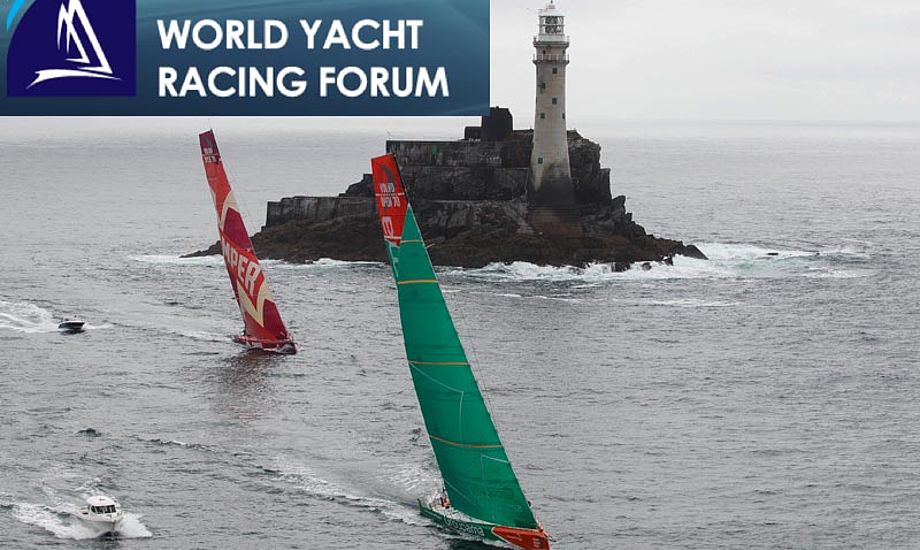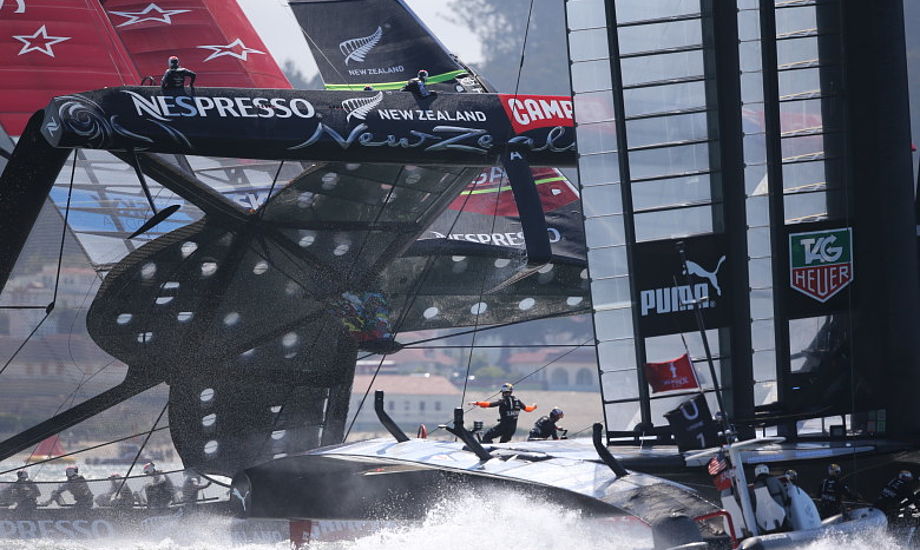Sådan var ændringerne på Oracle 17 - der førte til sejr
Bouwe Bekking opfordrer minbaad.dks læsere til at se Oracle Team USA's Matt Sheanans redegørelser for ændringerne, der blandt andet førte til at Oracle vandt 8 sejladser i træk i America's Cup.
Bouwe Bekking, tidligere jordomsejler i Volvo Ocean Race, er lige nu i St. Tropez og sejle storbåds-race. Han har sendt en mail videre, hvor Oracle Team USAs Matt Sheanan fortæller om ændringer i America's Cup:
Rudder T foil modification
This was one of the biggest performance enhancing changes.
The T-foils on Oracle's rudders were found to be cavitating at speed which caused drag and reduced the lift of the foil. The bubble was developing at the intersection of the vertical rudder and horizontal foil, towards the after end.
To reduce this a filet was added. But I'm also hearing that a nose cone type device was also fitted to the forward end of the rudder foil intersection to move the pressure distribution, much like the bulbous bow on a ship.
While the modifications may have reduced the drag of the rudder, there may well have been an improvement in the trim of the boat too. With more efficient lift at the back, it may have been possible to reduce the angle of attack of the main foils, reducing drag further.
Hull interceptor
A vertical plate like device known as an interceptor was fitted to the transoms to modify the flow out from the stern and reduce drag. The system acts like a boot spoiler on a car and is a popular device on boats like Open 60s.
Asymmetric set up
I'm told that the boat was set up asymmetrically, possibly with a bit more angle of attack on the starboard daggerboard.
This improved the boat's performance on port tack, allowing the crew to put the bows down, go for more speed, pop up onto the foils, increasing speed as the drag reduced and yet still maintain the same true wind angle on port.
On starboard the boat performed less well, but with the breeze cranked around more to the left, there was more port tack action than starboard.
When they were sailing downwind on starboard, the boat sailed deeper for the same speed as the foil hauled the boat to leeward making a better VMG downwind. Again with left hand breeze there was more starboard tack than port.
Mast Rake
The rig was raked further aft to make the boat point better and improve her balance. Wing power lower down
More power was generated in the wingsail by sailing with a more vertical leech in the lower sections and twisting the op off more.
Bowsprit
The team made plenty of play of this, most likely as it was the most visible change, but the reality was that removing it for breezy days reduced weight and windage. The latter was however particularly important with 50knots over the deck upwind.
Main foil adjustment
Contrary to the Kiwi press' speculations, the boat did not have a ‘Stability Augmentation System' (SAS) fitted. I'm led to believe that the team did look into something along these lines early on but ditched the idea.
Instead, the main foils were adjusted with a mechanical ratchet style device that had fixed settings for a variety of angles of attack. Broadly speaking similar to the way that a bicycles gears are changed with a lever and fixed settings.
Other differences
Although not specific alterations, there were other key differences with the main foils. Oracle has much shallower foils, by around 1m and are much less curved than the Kiwis. Presumably one of the advantages here was lower drag from the reduced wetted surface area.
A visible clue to this was how Oracle rode lower to the water's surface than the kiwi boat.
A less welcome characteristic aboard Oracle when at speed was that the boat would rise up so far that the main foil would run out of lateral support and jump sideways, planting the boat back down on the water. We saw this on a few occasions when she was being pressed hard on the first leg and around the first mark.
Key game changer
I'm also told that Oracle's big changes, I think to the rudder, were made on the 16 October, the day that both teams agreed to take off rather than race. In hindsight this could have been one of the Kiwis' big mistakes as they were on a roll at this point having 7 points to Oracle's one.
Agreeing to a day off allowed Oracle to engineer their biggest leap in performance as the built the major mod. Although this didn't give them an instant win straight away, it took just one race to tweak the boat after which they won every race from the 19th onwards.
The Kiwis only won a single race after the 16th.





